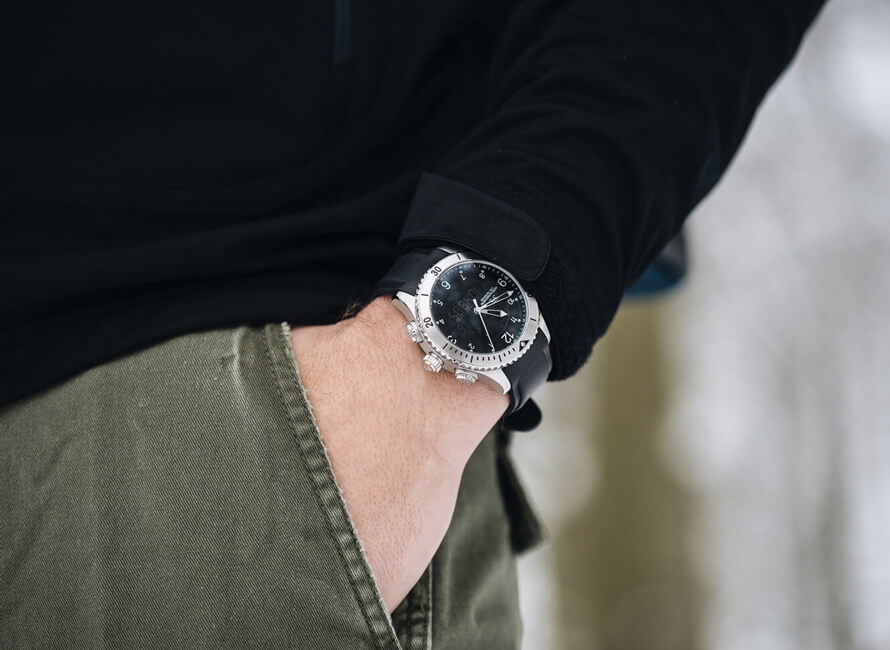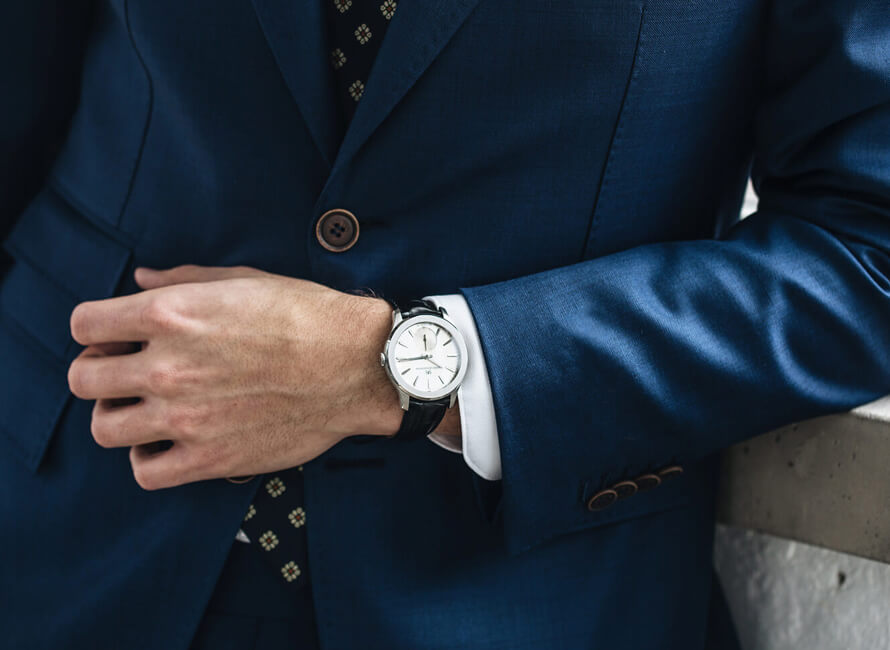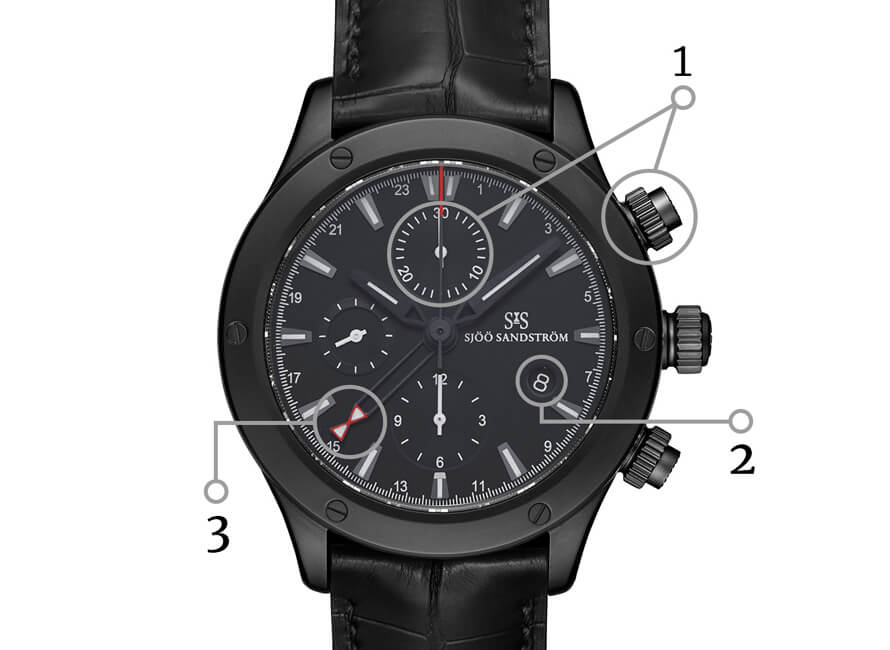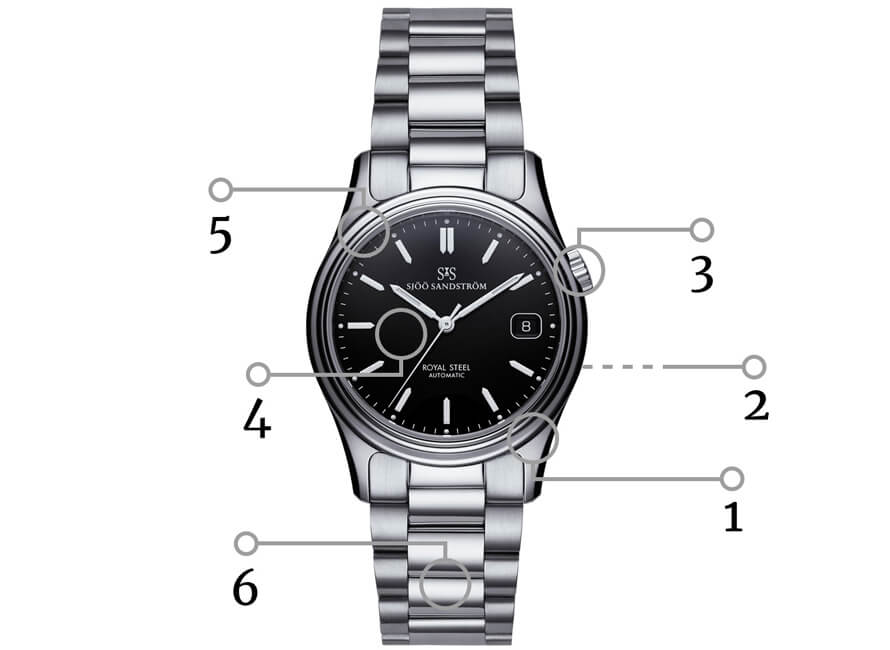Purchasing a watch online - Things to consider

Area of use
Watches are divided into two sections: sports and dress watches. However, there is no real standard, as something you see as a sports watch may be someone else's dress watch.
Sports watch - the collective name for watches designed for active use. Often waterproof, durable and equipped with some complications. Among sports watches, diving watches are usually mentioned, the name for watches that withstand water and high water pressure. These generally have a water resistance of 20 ATM (200m) or more and are characterised by their rotatable bezel. Sports watches are also often named "tool watches", as they are designed to be the ultimate tool for specific target groups.

Dress watch – an adjective for "finer" watches that may not have as many complications and are not designed for as much wear and tear. They are often more sensitive and lack waterproofing.

As mentioned, different watches are suitable for different occasions and if you need outfit or watch inspiration, you can read more here or send us an email. If the watch has a water resistance of 10 ATM (100m) or more, then it is capable of withstanding the majority of activities. In this case, it’s the choice of strap that can set limits.
Complications

1. Chronograph – collective term for watches equipped with a complication to separately measure time with a stop and start function. Distinguished by the two extra buttons on either side of the crown and the extra dials for seconds, minutes and hours.
2. Calendar – the most common complication on a watch in addition to the seconds hand allows today's date to be visible in a separate window on the dial.
3. World timer/GMT – the watch has an extra hand that can be set separately and with the help of the numbers on the bezel show the time in another part of the world. A complication that suits those who travel a lot and who want to see the time in several continents at the same time in a simple and clear way.
Movement
In general, high quality watches feature mechanical movements, which is also the case for most watches in our range. The exception is the UTC Skydiver, which requires a battery to power the digital dial and meet certain other requirements.
Other watch parts

2. Back case - protects the movement on the back of the watch and is opened during service or battery replacement. Available in both steel and crystal. Crystal allows the watches movement to be viewable.
3. Crown - generally located on the right side of the case and is mainly used to set the time and date but also to wind up the spring when necessary.
4. Watch face - available in lots of different designs with different sizes, materials and colours on the face itself and details in the form of indexes, numbers and luminous mass. Sometimes there is only one dial per watch model, but many manufacturers offer multiple choices of both colour and material.
5. Bezel - the bezel is mounted on the housing around the glass. The bezel can be rotated on diving watches and some models with a GMT function. As previously described, it is the size of the case that determines the actual size of the watch, but it is important to remember that the thickness of the bezel plays a big role in the perceived size
6. Strap - a watch strap consists of either stainless steel links, leather of some form of rubber. The strap plays a big role in how the watch can be used. An elegant leather strap is classic but is far from ideal near water, while links and rubber are perfect for water, whilst giving the watch a sportier look. For inspiration, you can read more here.
The strap obviously needs care just like the rest of the watch to last as long as possible. Read more here about how to best take care of your links or make changes and adjustments.
READ MORE: Three quality watches to give away as a gift
READ MORE: Your guide to buy a vintage watch
READ MORE: How to take care of your quality watch










































































